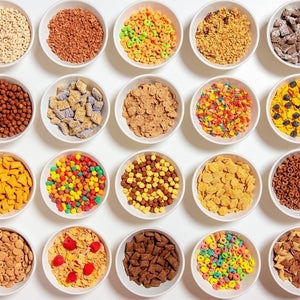The 2024 Update on Heavy Metals in Dark Chocolate
It’s now been over a year since we published our take on the alarming Consumer Reports exposé, which called out several major chocolate suppliers for unacceptable levels of heavy metals in their products. In July, new study came out in Frontiers in Nutrition, renewing interest in the topic, and many readers curious about what, if anything, they should know about the new data.
To begin with, let’s go over the article by Hands and colleagues out of The George Washington University that has sparked fresh concern on this topic. In short, the report provides data on heavy metal contamination in cocoa-containing products, including dark chocolate, across four distinct batches from 2014 to 2022. A quick search on the topic will bring up a dozen or more press-releases and blog posts, all of which contain virtually identical copy regarding the key findings, which look something like this:
- 43% of the tested products exceeded the Prop 65 limits* for lead, and 35% exceeded the limits for cadmium, while no products exceeded the limits for arsenic.
- “Organic” products were found to have higher levels of both lead and cadmium compared to non-organic products.
- While median concentrations of heavy metals were below Prop 65 maximum allowable dosage, certain products still pose a risk if consumed frequently or in combination with other sources of heavy metals.
- Most products (97.2%) fell below the U.S. FDA’s interim reference levels (IRLs**) for lead, suggesting that the overall risk may be limited
*If you’re not familiar with Prop 65, it refers to more stringent criteria enforced in California to reduce heavy metal content in consumer products.
** Interim reference levels refers to the fact that these are set by the FDA as temporary/subject to change while more scientific data is being gathered on the health/safety consequences of lead exposure at varying levels.
Whatever media outlet or blogger you choose to click on from the search results page, their conclusion will be some version of the following: “The study highlights the ongoing issue of heavy metal contamination in chocolate products and suggests that more awareness is needed regarding potential risks, especially for certain products.”
While this information is factually correct, it’s not particularly constructive or helpful in choosing the best dark chocolate treat the next time you’re checking out in the grocery line.
Now that we’ve read the full journal article, we understand a few reasons that all the websites have released the same relatively unhelpful recap, as well as some unfortunate shortcomings within the conclusions noted above:
- The authors do not disclose any of the specific brands or products they tested, so there’s virtually no information in the study to help readers to make informed purchasing decisions based on the findings. This isn’t a shortcoming from a scientific standpoint, just a limitation on what can be done with the data.
- There are two notable issues with the conclusions that are worth mentioning because they open the door for misinterpretation of the data. First, the authors note that the results are greatly skewed by a few outlier products with high heavy metal concentrations, which distorts the overall averages and makes the summary statistics less informative for assessing the risk across most chocolate products. Perhaps even more relevant for consumers shopping in 2024, the conclusions drawn from the study fail to separate the most recent test results from samples taken in 2014. This is problematic because several chocolate producers have made efforts in recent years to reduce heavy metal contamination, and/or have become more transparent in their labeling, especially since the big whistle-blower Consumer Report came out at the end of 2022. The data from samples taken 10 and 8 years ago is virtually irrelevant for shoppers today, and their most recent sample batch doesn’t address any dark chocolate on the market since 2022.
The bottom line: Although this new study was just released and made a splash in the media, it doesn’t really add anything meaningful to the conversation from a consumer standpoint.
Please see below for the original post, and our updated recommendations for which brands have stepped up and are delivering on making sure their chocolate products are safe and healthy in 2024.
Cocoa Versus Cacao
You’ve probably seen the word “cacao” when reading ingredient labels, and other times you’ve seen “cocoa.” The difference is actually pretty simple: cacao refers to the raw, unprocessed bean, and that becomes cocoa once it is roasted and otherwise processed.
Sometimes, labels will use the phrase “cocoa beans” rather than cacao, but these are functionally interchangeable.
When you see “cocoa” on a label, that often means there is added sugar or milk. You’ll want to look closer at these products to see if the cocoa is actually just roasted cacao or if there are added ingredients.
Heavy Metals in Chocolate
The two toxins flagged in the report were cadmium and lead. Dr. Hopkins’ research uncovered several important details about the source of these heavy metals in chocolate.
- Chocolate manufacturing operations are not the source of heavy metals in chocolate products. Non-cacao based ingredients used in chocolate formulations are not a significant source of cadmium or lead. In other words, the metals are coming from the cacao bean itself–more specifically from milled cacao nibs, which are the de-shelled portion of a cacao bean. The conversation is centered around dark chocolate, rather than chocolate more generally, because the former is high in cacao compared to the latter. Dark chocolate ranges anywhere from about 60% to 90% cacao by volume.
- This issue is not new; it’s something chocolate manufacturers have been struggling with for years. As You Sow, a nonprofit organization that promotes corporate social responsibility, has been independently testing chocolate for heavy metals and releasing their results since 2014. The study released by Consumer Reports in December of 2022 came on the heels of a four-years-long investigation by an expert committee. Their report explores how these heavy metals end up in chocolate products and ways to prevent such contamination.
- Europe has clear policies and limits on the presence of heavy metals in food, but the United States does not. The FDA has yet to establish specific limits on heavy metal contamination in finished food products– limits only exist for bottled water.
How Lead & Cadmium Get Into Chocolate
As mentioned above, cadmium and lead contamination are not the result of chocolate manufacturing processes. Each metal gets into the finished product through different means–and therefore the solutions to reduce each toxic metal differ.
Cadmium is taken up from the soil by the roots of cacao trees and transported into the beans. (This is similar to the way in which various heavy metals end up in rice and root vegetables, an issue that has also received a lot of attention in recent years.)
Over time, steps can be taken to reduce cadmium levels in soil, as well as prevent uptake of the heavy metals by plant roots. In the near term, experts conclude that remediation of the soil itself to reduce cadmium isn’t practical at scale. Therefore, the “only feasible strategy” provided by the panel of experts is for manufacturers to mix high cadmium cocoa with lower cadmium cocoa to bring down the concentration in the finished product.
As for lead, this metal makes its way into the cacao after it’s been harvested, during the handling of the wet beans.Fresh cacao beans are very sticky. After being removed from their pods, they must be fermented and dried. During this phase, the beans can come into contact with soil via direct contact with the ground or exposed surfaces like open patios, drying tables, plastic tarps, and bags/drying containers. Particles are also deposited on the wet beans from dust in the air, which may contain high concentrations of lead from exhaust produced by nearby equipment or automobiles.
Since lead contamination happens after harvesting, chocolate producers have more control in its prevention. Experts suggest that manufacturers work with cacao farmers to implement practices that reduce wet cacao bean contact with soil or environmental dust particles.
Which Chocolate Brands Are the Best & Worst?
The 2022 Consumer Reports study tested 28 dark chocolate bars for lead and cadmium. They used California’s maximum allowable dose levels for lead (0.5 mcg) and cadmium (4.1 mcg) to highlight the best and worst brands, which were as follows.
The brands found to have the lowest levels of heavy metal contamination were:
- Mast Organic Dark Chocolate (80% cacao)
- Taza Organic Chocolate (70% cacao)
- Ghirardelli Intense Dark Chocolate/Twilight Delight (86% and 72% cacao, respectively)
- Valrhona Abinao Dark Chococlate (85% cacao)
- Villakuyaya Organic Dark Chocolate Single Origin (up to 100% cacao)
The brands that were found to have the highest levels of heavy metal contamination were:
- Theo Organic Pure Dark/Extra Dark (70% and 85% cocoa, respectively)
- Trader Joe’s Dark Choc Lover’s (85% cocoa)
- Lily’s Extremely Dark (85% cocoa)
- Green & Black’s Organic Dark Chocolate (70% cocoa)
Our Top Picks for Dark Chocolate
In our original post, we selected Mast, Taza and Villakuyaya as our three top picks. Below we’ve expanded our recommended brands, after receiving verification of quality assurance testing that meets our standards.













